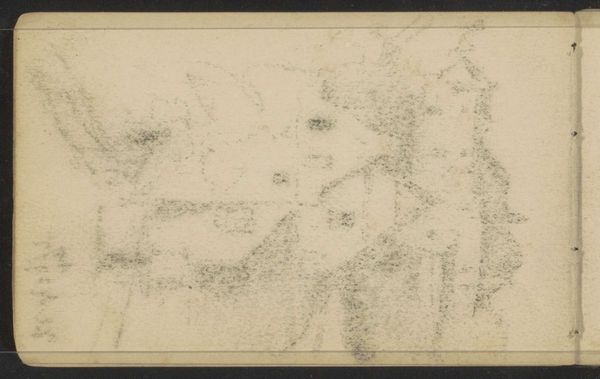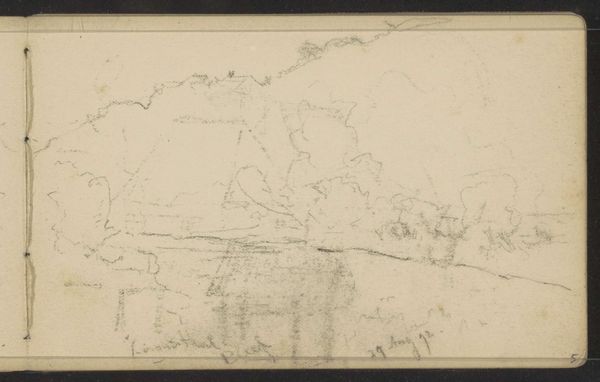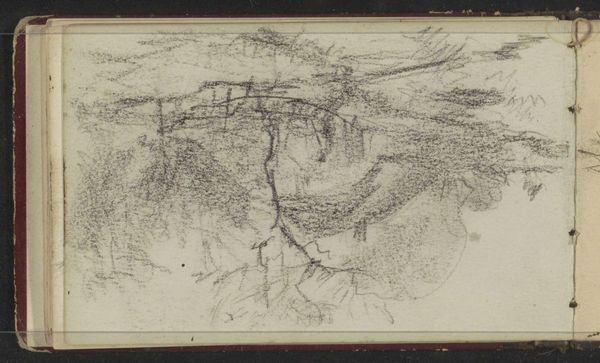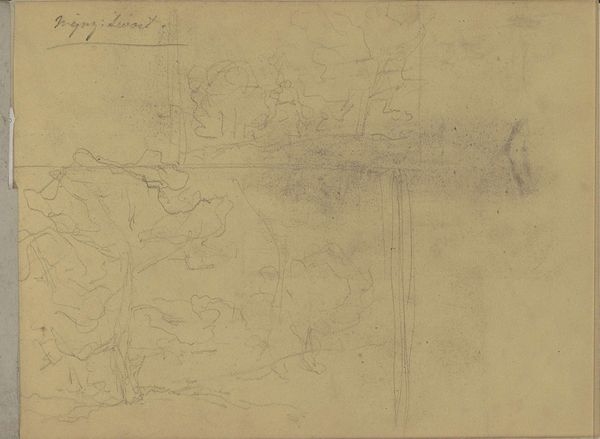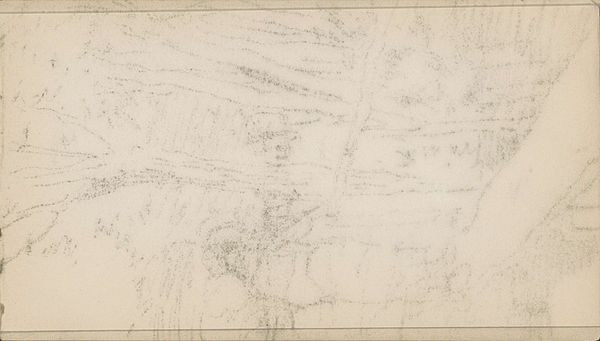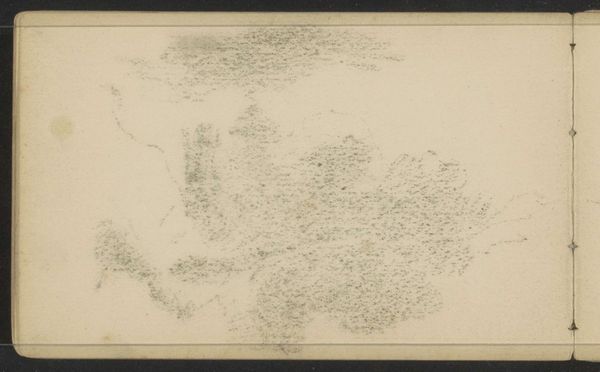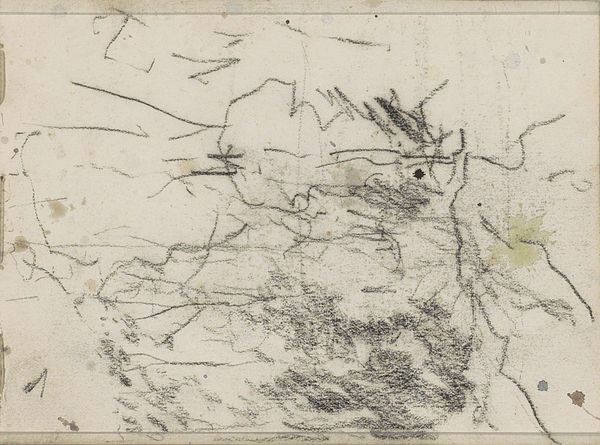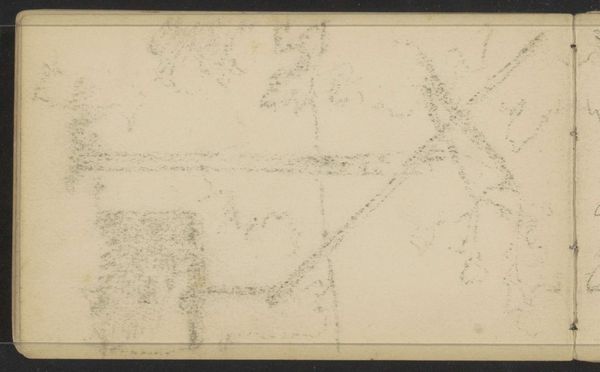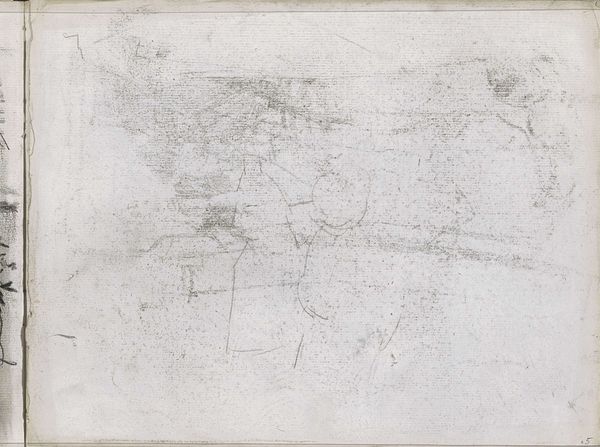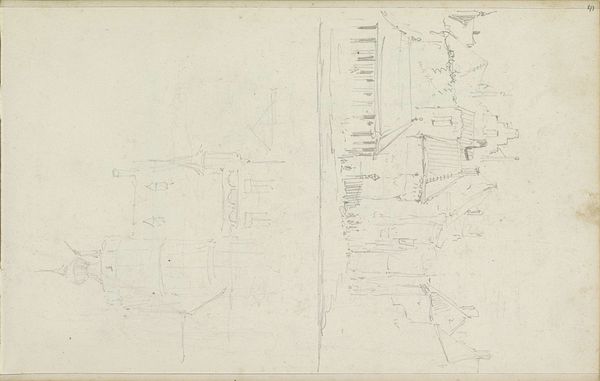
Dimensions: height 95 mm, width 154 mm
Copyright: Rijks Museum: Open Domain
Curator: This is "Landschap," a landscape drawing executed in 1892 by Willem Cornelis Rip. It's a delicate piece, primarily pencil on paper. What's your immediate impression? Editor: Bleak. There's an unrefined rawness that conveys a world of struggle, of a nature almost resisting representation. The loose lines remind me of the political unrest of the time. Curator: It’s fascinating you say that, because, structurally, it reads as a study in tonal variation. Observe the subtle shifts in shading, achieved through delicate hatching. The composition focuses not on specific details but on the interplay of light and shadow. Editor: And yet, aren’t those ‘subtle shifts’ also reflective of the stark realities many faced during this period? Rural life wasn’t some picturesque idyll; it was hard, thankless work. These rough marks perhaps reveal that dissonance? The material constraints influencing the artist, too – this is clearly a study. Curator: Certainly, the materiality speaks to the immediacy of the sketch. Note the economy of line; how much is suggested with so little. Rip masterfully utilizes the negative space, allowing the composition to breathe. One might argue that he found a sense of freedom precisely in this reductive, structured technique. Editor: A sense of freedom for whom? Can we divorce the act of sketching from the societal expectations placed upon landscape artists at the time? It reminds me of art from the early mines, sketching was the art of the engineers documenting labor! The almost brutal quality of these rapid marks can reflect the land being reshaped, in an equally brutal way. Curator: Perhaps it speaks to multiple levels. Through formal reduction and careful composition, it shows us the artistic process, the underlying abstract structures—not just political narratives, but art for its own sake. Editor: Indeed, it is a valuable contribution, serving as an enduring example of art historical landscape that opens doors to various sociopolitical dialogues through the ages. Curator: Ultimately, it stands as an evocative and concise sketch.
Comments
No comments
Be the first to comment and join the conversation on the ultimate creative platform.
